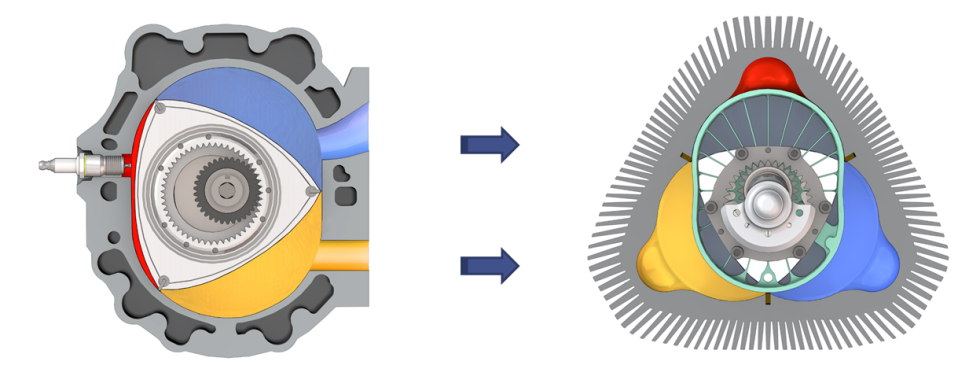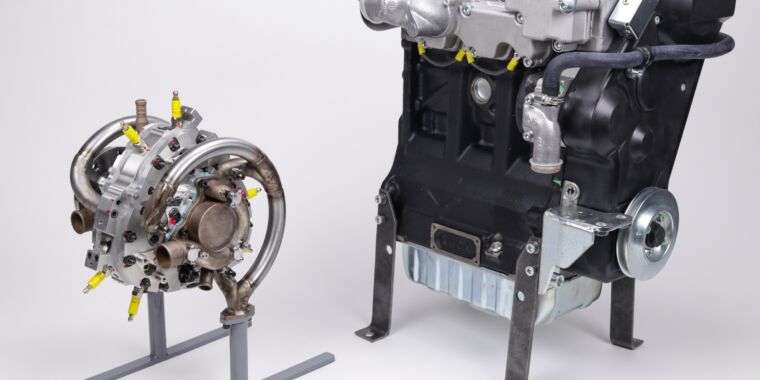LiquidPiston
Rotary engines have an aura of cool. In games of Top Trumps, the V12 might have been king, but a rotary was a joker, a wild card. A lack of mainstream success no doubt contributes; there are reasons they were never commonplace, including their oil-burning apex seals, which created emissions and fuel-consumption headaches.
LiquidPiston thinks it has those problems solved, however, and in the process, it created a new internal combustion engine that’s small and efficient. It has demonstrated its tech on the bench and in a go-kart, but also in uncrewed aerial vehicles for the US military.
While little about the rotary engine merits the word, in a “traditional” Wankel rotary, a triangle-shaped rotor turns within a chamber during its combustion cycle. Apex seals are fitted at the apices of the rotor, but they need constant lubrication with oil, plenty of which burns during combustion. So, a Wankel engine needs constant oil top-ups while dealing with the products of that burnt oil. And those apex seals wear down.
“[The Wankel] has this long, skinny, moving combustion chamber. It’s probably the worst thing you can do for an engine,” explained Alec Shkolnik, founder and CEO of LiquidPiston. “Combustion kind of develops like a ball and then when it hits the wall, the wall is cold, and it extinguishes. So imagine trying to grow a flame through a narrow corridor, and you see that you get really bad combustion,” he told me.

LiquidPiston
The solution involves turning the engine inside out. Instead of an oval-shaped combustion chamber and a triangular rotor, now the combustion chamber is triangular and the rotor is an oval, which contains a pre-chamber.
“So instead of a long, skinny, moving combustion chamber, we now have a stationary combustion chamber inside of the housing,” Shkolnik said. “What that means is we can make it smaller, and that drives a higher compression ratio. And because it’s stationary, it’s suitable for direct injection of fuel,” he said. And since the seals are stationary, the oil problem should be fixed.
“We can directly interface the apex seals with the face seals. Now that there are no gaps anymore, the blow-by is significantly reduced, and… we can directly lubricate the seals by metering tiny amounts of oil… right to the ceiling surface,” Shkolnik said.


